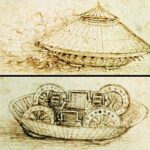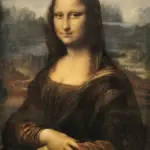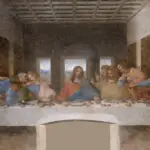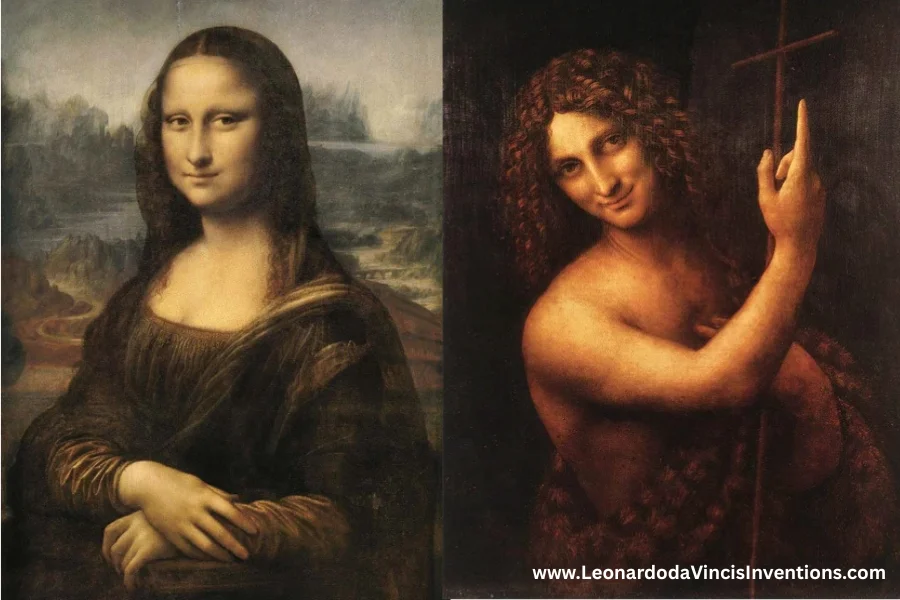
Leonardo da Vinci paintings mirrored have fascinated art lovers and experts for centuries. If you have ever wondered why some of his works appear reversed or why da Vinci used mirrored techniques, you are not alone.
This article aims to clarify the confusion and explain the simple reasons behind this distinctive style. You will gain a fresh perspective on his creative process.
Leonardo da Vinci often used mirrors and reversed images to see his artwork with “new eyes.” This helped him spot mistakes and improve accuracy.
The mirrored effect also comes from his habit of writing in reverse. This habit was likely a result of being left-handed and wanting to avoid smudging his work.
Artists today still use similar methods, flipping or mirroring their art to get a fresh look. This technique can be traced back to da Vinci’s studio practices.
The Artistic Techniques Behind Leonardo da Vinci Paintings Mirrored
Leonardo da Vinci paintings mirrored effects attract interest for their use of symmetry, technical skill, and hidden meanings. These mirrored techniques connect science, psychology, and Renaissance innovation to create masterpieces full of visual depth.
Symmetry, Reflection, and Visual Effects in Da Vinci’s Artworks
Symmetry and reflection play a significant role in Leonardo da Vinci’s art. He often created balance by arranging figures and backgrounds to mirror each other.
This method guides the viewer’s eye across the painting, allowing it to move smoothly and naturally. It adds harmony and depth, making his works feel more lifelike.
Mirrored images in da Vinci’s art sometimes produce visual illusions and secret meanings. Art historians have discovered that specific compositions reveal hidden shapes or faces when viewed in reverse.
Such careful planning blends beauty with mathematical precision—key concepts of the Renaissance. By combining scientific observation with artistic skill, da Vinci elevates the use of symmetry and reflection.
These choices result in a more engaging and immersive experience for the viewer.
The Role of Anatomy and Composition in Mirrored Masterpieces
Anatomical accuracy is a hallmark of Leonardo’s paintings. He studied the human body for years, often using mirrored sketches to master proportion and movement.
This close attention to anatomy allowed him to create portraits with realistic poses and emotional depth. Mirrored forms in his compositions also highlight duality and balance.
For example, the arrangement of hands, eyes, and other features can show both graceful motion and inner character. Such choices express empathy and an understanding of human emotion.
Renaissance Innovation and the Science of Mirrored Techniques
The Renaissance was a period of exploration of new scientific ideas and artistic secrets. Leonardo da Vinci utilized mirrors as tools in his workshop, experimenting with perspective, light, and reversed images.
This unique use of science helped create illusions and depth in his artworks. Mirrored techniques sometimes hid messages or clues about the subjects of his paintings.
By applying a scientific approach to his art, da Vinci bridged the gap between observation and creativity. His work influenced future artists to explore the science and illusion of mirrored art.
Hidden Meanings and Symbolism in Mirrored Da Vinci Paintings
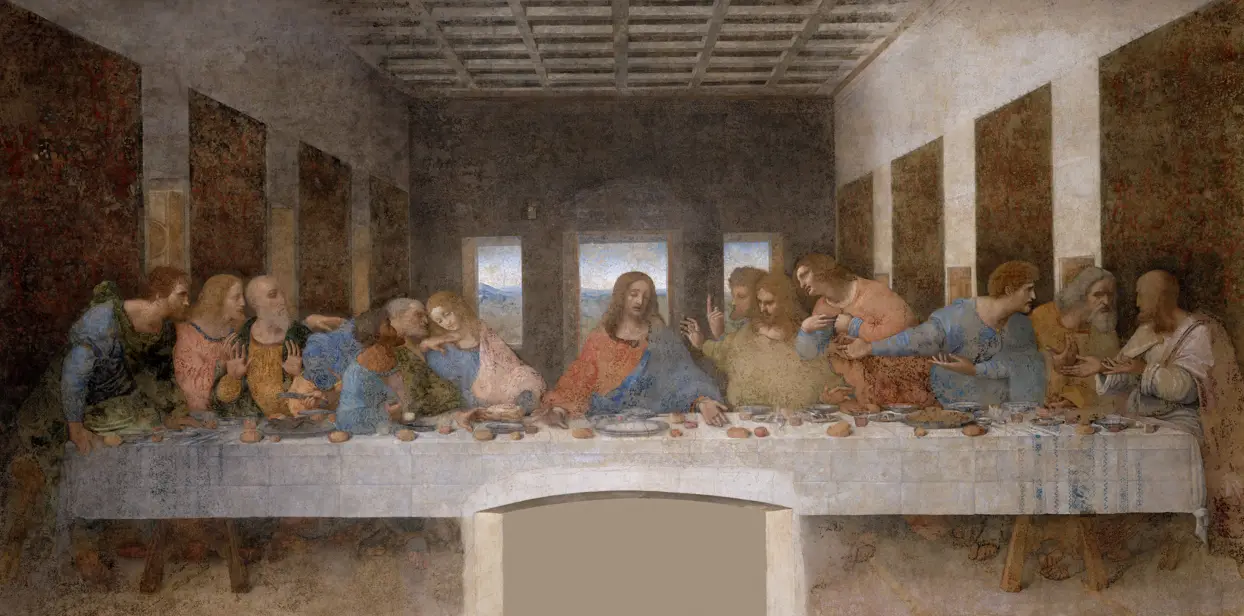
Leonardo da Vinci, The Last Supper
Leonardo da Vinci employed mirrors and symmetry in his paintings to incorporate hidden layers of meaning and clever visual effects.
These mirrored effects often reveal more profound symbolism, secret messages, and unique insights about the human mind and body.
Uncovering Hidden Messages and Artistic Secrets
Many experts believe that Leonardo da Vinci’s paintings often mirrored certain details to conceal messages or prompt viewers to think more deeply. Some artworks show mirrored images or reversed features, inviting analysis and curiosity.
His famous use of mirror writing shows his interest in secrets and coded information. Mirrored text and images help protect ideas from being easily stolen and draw attention to the mystery behind mirrored da Vinci paintings.
Leonardo’s fascination with puzzles influenced his art. This playful use of reflection often led to speculations about hidden meanings in Leonardo’s paintings and whether he used visual tricks to challenge viewers’ perception and understanding.
Symbolic Use of Mirrors and Illusion in Da Vinci’s Masterpieces
Leonardo da Vinci used mirrors to explore illusion and reality. In some masterpieces, he painted objects or faces with mirrored symmetry, creating striking visual effects that challenge viewers.
This symmetry and reflection in Renaissance art exposed his scientific approach to painting. Mirrored images in da Vinci’s art added harmony, balance, and innovation to his paintings.
He utilized the reflective properties of mirrors to study anatomy, enhance accuracy, and comprehend how light interacts with surfaces. His attention to optical effects made his compositions appear more lifelike and detailed.
Iconography, Duality, and Psychological Depth in Da Vinci’s Works
Leonardo’s mirrored compositions often reflect themes of duality and psychological complexity. In works like “The Last Supper,” experts have analyzed how symmetry and positioning suggest inner struggles, character, and emotion.
He employed mirrored forms to convey both the physical and mental aspects of the human body and mind. This duality in Leonardo’s art shows empathy and grace, capturing human experience and subtle emotional states.
Iconographic analysis of da Vinci’s works highlights his use of symbolism and layered meaning. His innovative compositions and perspectives gave Renaissance painting new psychological depth, influencing how art interprets complex human emotions and interactions.
The Enduring Impact of Mirrored Paintings on Art and Interpretation
Leonardo da Vinci paintings mirrored effects have changed how people see and understand art. His use of symmetry and reflection helped inspire new ways to express depth, human emotion, and scientific ideas in Renaissance masterpieces.
Empathy, Human Body, and Character in Mirrored Portraits
Da Vinci’s mirrored images often highlight empathy and human expression in paintings. By carefully choosing how a figure faces or interacts with its reflection, he created a feeling of connection between the artwork and the viewer.
These visual techniques helped show subtle emotions and inner thoughts. In portraits like the Mona Lisa, the balanced and almost symmetrical posture supports an illusion of calm grace.
Mirrored forms in da Vinci’s art allowed him to capture lifelike facial features. This added psychological depth and revealed the character of his subjects.
The use of mirrors or mirrored effects was not just for visual trickery. It allows the artist to compare two sides of a person’s face or body, enabling them to show empathy through a realistic depiction of the human form and spirit.
Analysis and Interpretation of Famous Da Vinci Mirrored Paintings
The analysis of famous da Vinci mirrored paintings, such as The Last Supper, uncovers hidden messages in Leonardo’s paintings and secret symbolic meanings.
Some historians suggest that mirrored images or reversed writing may conceal clues or additional layers of meaning within da Vinci’s masterpieces.
Mirrored compositions contribute to visual balance in his artworks. By symmetrically arranging figures, da Vinci achieved harmony and drew attention to central symbols.
These mirrored structures prompt new forms of interpretation, as viewers search for duality, hidden messages, or spiritual themes woven into the scene. Degrees of visual illusion, balance, and iconography appear through the creative use of symmetry.
Influence of Science and Anatomy on Da Vinci’s Mirrored Artworks
Da Vinci’s study of anatomy and science played a key role in the appearance of mirrored forms. He used innovative composition and meticulous study of the human body to create accurate and lifelike renditions.
His scientific curiosity paved the way for anatomical accuracy and mirrored forms that were unmatched during the Renaissance. Artistic techniques, such as using a mirror to study perspective and body mechanics, employed by da Vinci allowed him to understand how muscles and bones functioned in both normal and reversed positions.
The role of mirrors in Renaissance painting enabled da Vinci to refine his figures and convey a sense of harmony and proportion. Mirrored images in da Vinci’s art reveal his unique blend of art and scientific thinking.
Frequently Asked Questions
Leonardo da Vinci used mirror writing in many of his notebooks. Some of his paintings and sketches show uncommon techniques.
His works and habits have led to questions about his life, his skills, and unique traits like ambidexterity.
Did Leonardo da Vinci do mirror writing?
Yes, Leonardo often wrote his notes in mirror writing, which means the text appears reversed, as if seen in a mirror. He was left-handed, and writing this way may have kept his hand from smudging the ink.
Some also suggest he did it for privacy, but the smudge prevention is the most widely accepted explanation. For more details, see why he used mirror writing.
Who bought the $450 million dollar painting?
The painting known as “Salvator Mundi” sold at auction for over $450 million. Saudi Arabian prince Badr bin Abdullah reportedly bought it on behalf of Crown Prince Mohammed bin Salman.
Was Leonardo da Vinci ambidextrous?
Leonardo is believed to have been ambidextrous. Writing in reverse with his left hand and painting with both hands helped him work efficiently and with high skill.
What is the mysterious painting of Leonardo da Vinci?
“Salvator Mundi” is often referred to as the mysterious painting because its authorship and restoration history have sparked intense debates.
Its dramatic rediscovery and record-setting price made headlines around the world.
Is mirror writing rare?
Mirror writing is uncommon among adults but can be learned with practice. Some left-handed people, like Leonardo da Vinci, find it more natural.
In children, it may appear as part of early writing development.
Did Leonardo da Vinci have ADHD?
Some experts have suggested Leonardo displayed traits similar to modern ADHD, such as difficulty finishing projects and being easily distracted. However, there is no formal diagnosis since ADHD was not recognized in his time.
What does it mean if a child writes a mirror image?
If a child writes mirrored letters or words, it can be a regular part of learning to write. Many young children reverse letters as they develop handwriting skills.
Older children who continue to write in mirror image may face learning challenges.
Who was Leonardo da Vinci’s lover?
Historical records do not indicate any romantic relationships in Leonardo’s life. Some scholars have speculated about his close relationships.
However, there is no concrete evidence of a romantic partner.
What is the mirror writing of the ambulance?
The word “AMBULANCE” appears in reverse on vehicles. Drivers can read it correctly in their rearview mirrors and move aside quickly.
What did Leonardo da Vinci invent?
Leonardo designed many devices, including flying machines and a type of armored vehicle.
He also created various bridges and engineering tools.
Most of his inventions stayed on paper.
Some of his concepts were ahead of his time.
Many of his sketches show creativity and careful observation.
 I’m Leonardo Bianchi, the mind behind Leonardo da Vinci's Inventions. Thanks for visiting.
I’m Leonardo Bianchi, the mind behind Leonardo da Vinci's Inventions. Thanks for visiting. 
